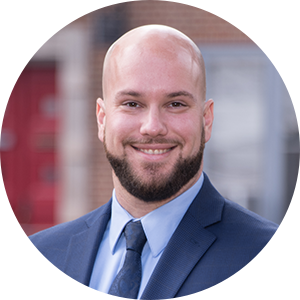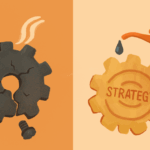If you’ve ever attempted to bake a cake, you know it’s not easy. If you stray from the recipe and add a quarter cup of sugar instead of a third or bake at 395 degrees versus 400, the finished product will not be what you set out to make, nor will your audience want to consume it. The same is true for telling compelling and authentic higher ed student stories.
Whether you’re showcasing adult learners, first-gen students, alumni or graduate students, there is a recipe you can follow to be sure you’re showcasing your students as authentic individuals from a variety of backgrounds and circumstances with unique goals and aspirations. According to Capgemini, 81% of emotionally connected consumers will not only promote a brand among their family and friends, but they will also spend more with that brand. The report also found that 70% of consumers with high emotional engagement to brand content spend up to twice as much with those brands.
Although no recipe is perfect, here are five steps to set yourself up to tell authentic student stories successfully.
1. Don’t force a story to fit into a box; change the box
Whenever we set out to launch a new marketing campaign, video project, new edition of a magazine or social media series, we always have an overarching theme, goal and outcome in mind. However, when the campaign involves student stories, the story itself may transcend any goal, theme or brand.
You might think you must always stick to your brand story and message. In many cases, your students can tell your brand story better than you because, whether or not you realize it, they are your brand story.
By listening to our students and understanding how their stories could communicate the value of our institution, the theme we brainstormed for hours can become the story our prospective students need to hear—not the one we thought they needed to hear.
2. Use data and research to determine what stories to tell and emotion to make them compelling
Good marketing is often equal parts data and art. As a C- high school math student turned data enthusiast, I use some form of data daily on tasks large to small. I use data to help with projects like informing the names of new programs, ensuring we’re bidding on the right keywords and evaluating if a financial aid email is in the best possible position within our student journey communications. Data can do a lot to make us better marketers, but it can’t communicate the emotions associated with choosing a college, returning to school as an adult or being the first in your family to graduate. Only art can do that.
Emotional connection is what compels us to consume content. We can communicate selling points like our caring and dedicated faculty and staff who are committed to your success in and out of the classroom in any email, web copy or brochure. Only certain mediums can communicate the emotions of an adult student, explaining how she sat in her car parked just outside our office for over an hour, contemplating whether or not to even come inside for a meeting. At the most basic level, your audience is human beings, and making a complex choice like which college to attend (or to attend at all) is an emotional roller coaster. Seeing others express similar emotions to what the viewer might be feeling can make for a powerful story.
3. Dare to be creative
Stylistically, higher ed tends to follow a certain aesthetic when filming student videos. Picture, if you will, a student sitting in an armchair or something similar, with either a room full of desks or a window overlooking a scenic area of campus at their back, speaking to the interviewer off-camera. B-roll is of the student at a computer, in a classroom or jotting some notes in the library. Playing over this is the student saying they chose this institution because they fell in love with the campus when they visited. There may be shots from various angles of the student gazing introspectively at the trees above or the clock tower in the distance.
Sound familiar? We’ve all done it. Three students smiling on a bench, perhaps one has a guitar, and all wearing their college gear! A totally normal, everyday occurrence on a college campus.
The third ingredient to telling compelling stories is to stray from that recipe and dare to add your own flavor. Play with lighting and shadows, get creative with framing, take risks with color treatments and even involve the student’s family in the b-roll if it makes sense (pro tip for making a compelling adult learner video). Do things to set your video apart because once you’ve hooked the viewer, the message will likely be received the way you intended.
4. Create content for multiple mediums
I believe video is one of the most powerful marketing tools available to us. I also believe there is still something romantic about the written word, and I’m a sucker for a well-done photo shoot.
Often, the 90-second to 2-minute video only works on your website (embedded into a written story about the student). But for social or paid YouTube ads, you need a 15- or 30-second version or even a 5-second version if they gave you the golden quote you were seeking. Telling stories across mediums allows you to create an immersive experience for the audience. Better yet, think of outside-the-box ways you can utilize the content library you’re generating.
Our division recently moved into a newly constructed building on campus. To decorate our blank walls, we’re turning still photos of students participating in a video project into digital portraits, holding an art gallery-style event on campus to showcase the work and then decorating the walls of our new building with the one-of-a-kind commissioned art. Believe it or not, all of that is possible from a simple five-student testimonial series.
5. Your students are your main characters
We often showcase our campuses, faculty or presidents/chancellors as selling points to attend, but there’s no better way to understand what it’s like to attend your institution than hearing from someone who has experienced it firsthand.
I recently interviewed a graduate who returned to college ten years after stopping out one semester shy of earning her bachelor’s degree at another institution because she couldn’t find a cosigner for her student loan. During our interview, I didn’t ask her a single question about the college itself. She explained how she was able to complete her degree in 2 years, during the pandemic, with a 1-year-old and a full-time job without missing out on life, her daughter, work or anything else she feared she might. No need to even say the words flexible, convenient, or supportive; she said all the viewer needed to hear.
The best student stories communicate what it feels like to be at your institution without needing to mention a unique value proposition or characteristic.
Baking a cake is hard. Telling authentic student stories doesn’t have to be. If you follow the recipe, your odds of creating a product your audience will want to consume are much higher.







